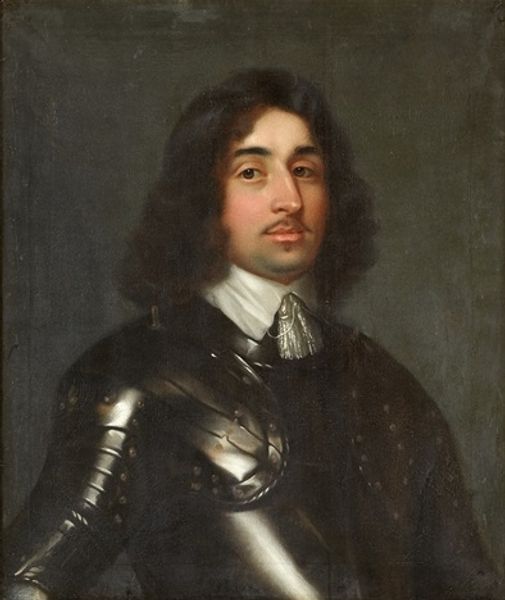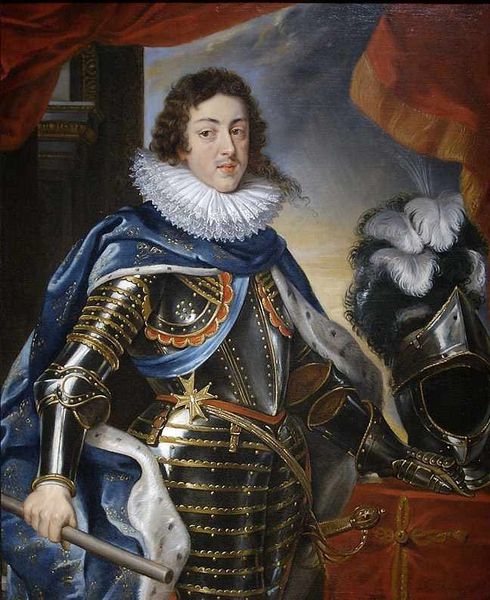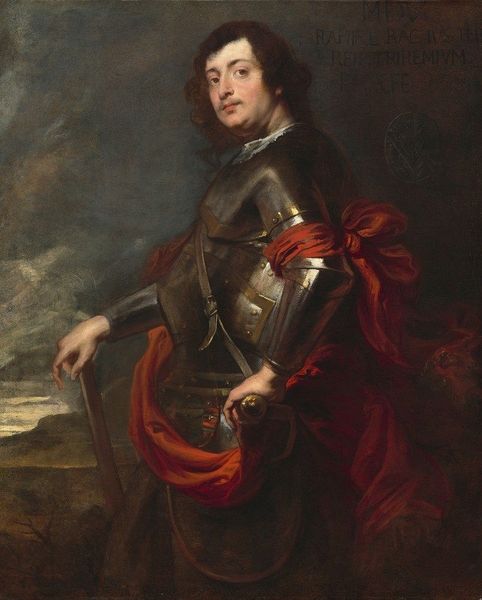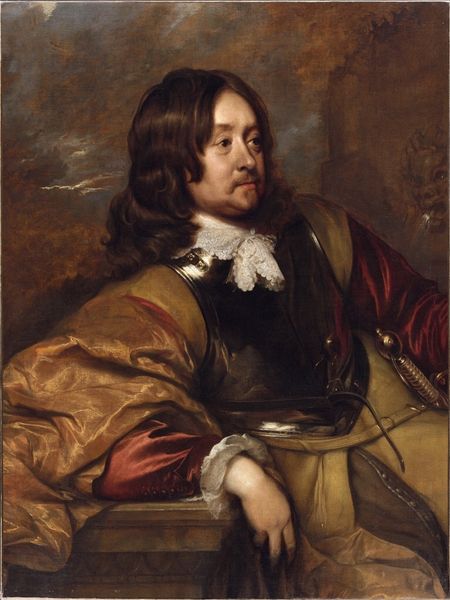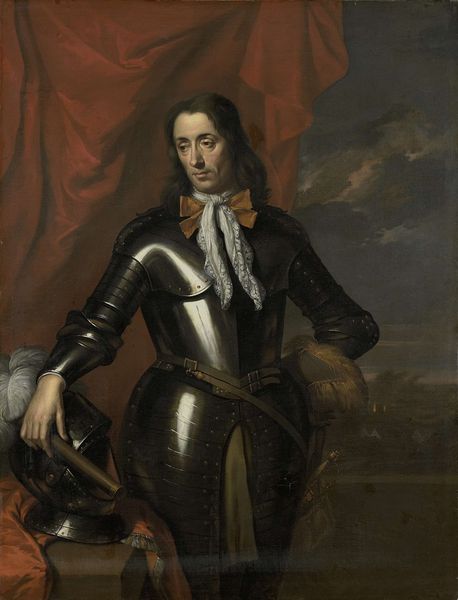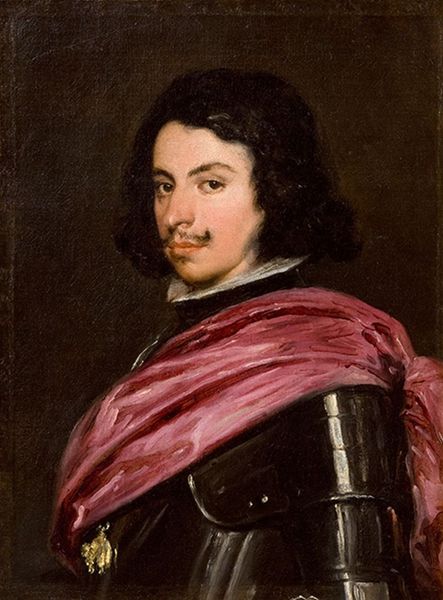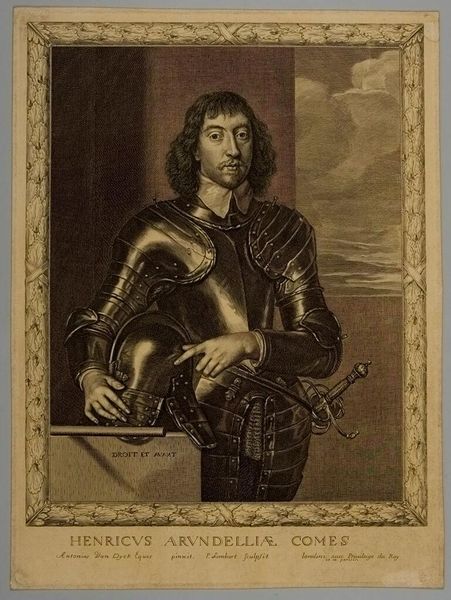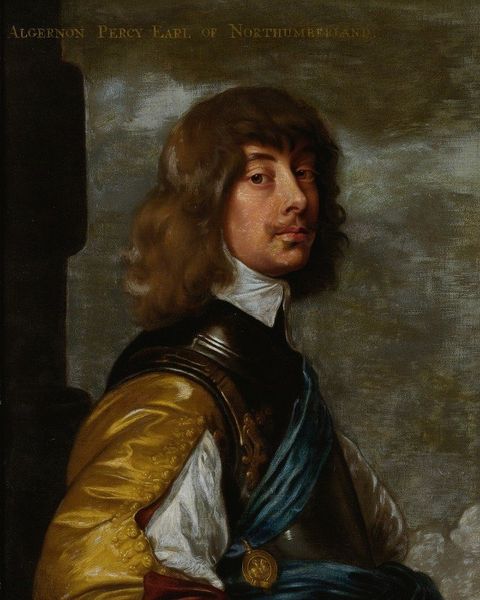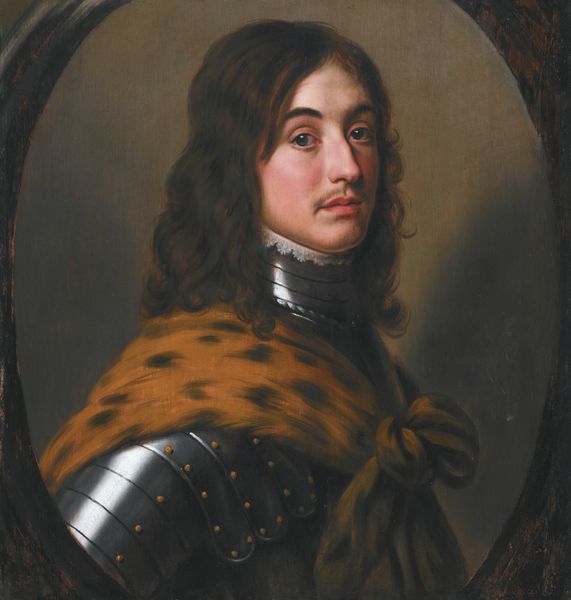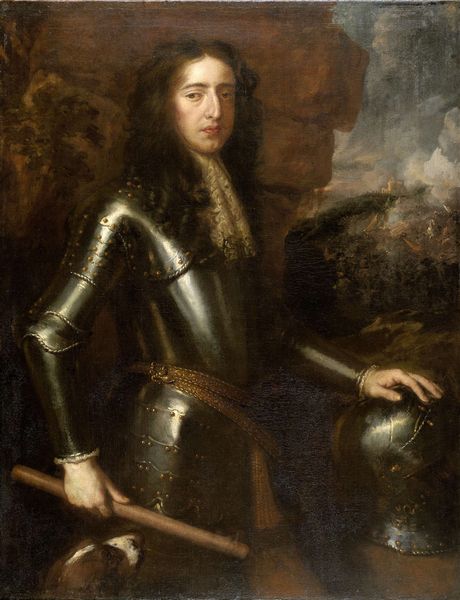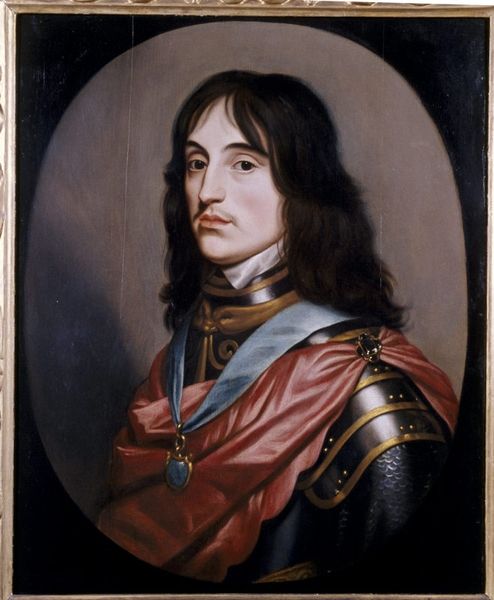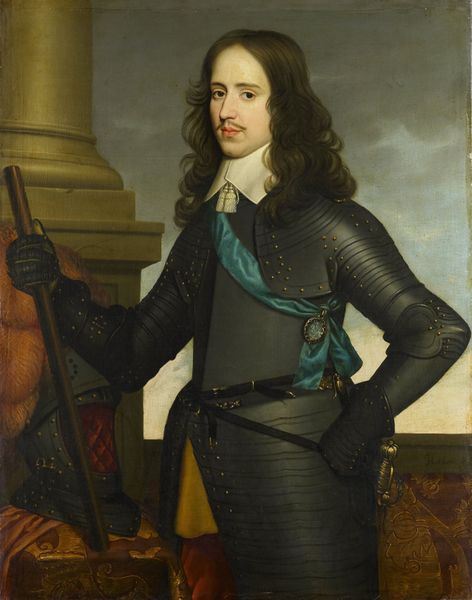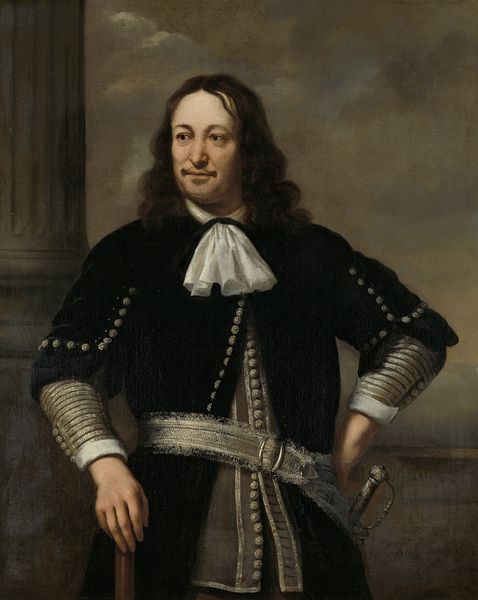
painting, oil-paint
#
portrait
#
baroque
#
painting
#
oil-paint
#
figuration
#
history-painting
Copyright: Public domain
Curator: This is Sebastien Bourdon’s 1653 oil painting, “King Charles X Gustav of Sweden.” Editor: There's an interesting sense of vulnerability despite the armor. His gaze isn't exactly confident, and the slightly melancholic tone seems to subvert traditional heroic portraiture. Curator: It's a fascinating composition. Note how Bourdon uses the draped fabric—that striking blue—to create a diagonal that draws your eye through the painting, balancing the weight of the armor. The column suggests classical grandeur. Editor: But doesn’t the very choice of depicting royalty in armor, even if melancholic, reinforce a power dynamic? Bourdon was working within the system, visually legitimizing Charles X Gustav’s reign, whether intentionally or not. Curator: Undoubtedly. However, examine the interplay of light and shadow on the metal. It's not simply representational; the reflective surfaces almost abstract the figure, creating a complex textural surface. The materiality itself is crucial to the viewing experience. Editor: And consider what that armor *represents*: violence, domination, and the enforcement of social hierarchies. Is Bourdon inviting us to question that by portraying a somber king, or is it merely a superficial nod to introspection within an inherently unequal structure? Curator: We can't ignore that this image flattens and idealizes him; but I am fascinated by how the painter uses color, almost independently, to create dynamism in what could easily be a static depiction of power. Editor: Indeed. Understanding art such as this also helps us challenge today’s symbols of power and authority, pushing for representations that embrace equity. Curator: A painting that shows us something new each time, I think. Editor: Precisely – art’s dialogue with power, then and now, that will echo onward.
Comments
No comments
Be the first to comment and join the conversation on the ultimate creative platform.
